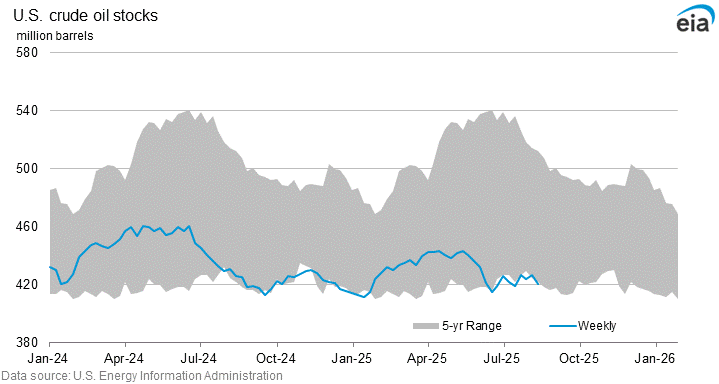 |
| Volatility in the crude oil markets |
The significant fall of crude oil price on Wednesday that was attributed to the troubles in the banking sector, slightly eased on Thursday, as the Swiss Central Bank came forward to throw a financial lifeline to Credit Suisse bank for its survival.
Credit Suisse, the second largest Swiss bank, is a key player in the international markets, having been one of the 30 globally important banks in the world.
Not only did it admit the loss of staggering 7.29 billion Swiss francs last year, but also the erosion of funds to the tune of 110 billion Swiss francs by its clients during the last quarter in 2022.
When one of its main financial backers, Saudi National Bank, made it clear that it could no longer support the Swiss banking giant on Wednesday, citing 'regulatory hurdles', markets in general and crude oil markets in particular, went into a tailspin.
The timely intervention by the Swiss Central Bank, however, calmed the anxieties to some extent; its long term effect remains to be seen, though.
As of 16:00 GMT on Thursday, the price of WTI, Brent and LNG, liquified natural gas, were at $67.40, $73.56 and $2.52 respectively.
The price of Brent crude oil fell below $75 per barrel for the first time since 2021.
The dramatic fall of oil price to a 15-month-low on Wednesday, however, will not compel the OPEC+ to react on impulse, according to seasoned analysts, as the stakes couldn't be higher for such a risky move, when the global economy is staring into an abyss of uncertainty - once again; nobody underestimates the cumulative impact of the energy crisis on it, at its core.
There is a reason to believe the current position held by the OPEC+, as Prince Abdulazis bin Salman, the Saudi energy minister, told Energy Intelligence recently that the cartel would stick to its production target, as agreed by the member states.
Since Saudi Arabia still is the de facto leader of the group, it still wields huge influence in the club, when it comes to the decisions of making production targets - or cuts.
The resurrection of NOPEC - No Oil Producing and Exporting Cartels - bill, in the US, meanwhile, is causing friction between the world's top crude oil exporter, Saudi Arabia and world's top crude oil producer, the US.
Having been annoyed by the reintroduction of the bill by a group of bi-partisan US senators, Prince Abdulazis made it clear that the OPEC+ would retaliate against any move that stems from the potential act.
The NOPEC bill, if becomes law, would give the US authorities power over what they consider, the monopolistic powers of the members of the OPEC+; in short, the member of the OPEC+ could be sued at the Federal courts in the US; in addition, the US can impose price caps at its will too.
The retaliation, according to the Saudi energy minister, may come in the form of production cuts or in the worst case scenario, stopping exporting oil to the country in question altogether - the US or perhaps an ally.
The renewed interest of the NOPEC bill comes in the wake of normalization of the relations between Saudi Arabia and its regional foe, Iran, with the intervention of China. Although the US publicly said it was good move, the Kingdom getting closer to China may not go down very well with the US in the long run.
Although some Arab nations in the region as well as some sections of the Iranian media are skeptical about the long-term success of the relations between the two rivals, the prospect of Saudi investment going into Iran that has been under punitive, crippling US sanctions has raised eyebrows both in the US and Israel, especially in the face of advancing Iranian nuclear programme.
As far as crude oil markets are concerned, analysts see it as a positive move, given Iran's ability to add more crude oil into the markets, when the key players in the region often attribute the failure to meet the production targets to the lack of spare capacity.
The revival of the JCPOA, 2015 Iranian nuclear deal, meanwhile, is still in a state of limbo, despite many false dawns in the past. Analysts, in this context, wonder how Iran can enter the crude oil markets as a legitimate seller, when the JCPOA has not overcome the lingering inertia at political level.
Both the US and Iran are digging in their heels on ideological grounds, making the prospect of reaching an amicable deal next to impossible. Saudi Arabia has to bridge the gap between the two sworn enemies, before Iran entering the crude oil markets again.
On the demand front, meanwhile, the API, American Petroleum Institute and EIA, US Energy Information Administration, reported yet another crude oil inventory build. In India, the world's second largest importer of crude oil, there was 14% drop in demand for diesel and petrol during the first two weeks of March, compared to what it was in February, according to the India media.
In the rest of South Asia, meanwhile, the dire economic situation in Sri Lanka, Pakistan, Bangladesh and Nepal has resulted in significant drop of oil imports, especially from the Middle Eastern producers.
That means the fear of global economic slow-down is no longer in the hypothetical realm.
In this context, analysts are keen on collecting data on factory activities in China to see whether the revival indicated by a rise in Manufacturing Purchasing Managers' Index, PMI, in February is stable and irreversible amidst plethora of disappointing news elsewhere.
HA







